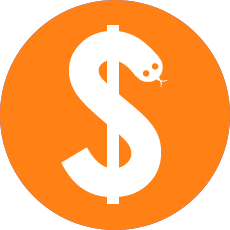
Python Profits
Overview
In this unit, students are introduced to the versatile Python programming environent and use this to create scripts involving input, simple processing and output. Student are initially encouraged to debug existing code to foster familiarity with the syntax and then are given less structured tasks to develop their own solutions. Students are reminded and work with the concepts of algorithms (pseudocode and flowcharts), variables, simple mathematics, sequencing, selection and iteration in an attempt to introduce them to the fascinating world of programming through the focus of running their own app development business.
Lesson by lesson key content
Lesson
number
|
Indicative content
|
Homework
|
| 1 |
An introduction to Python and Strings; create your first Python code; produce your own program to input and output user information.
|
None for this lesson. |
| 2 |
Debug a file that was infected with a virus; correct software code so that Python knows the variables entered are integers and not a string; produce your own programs to capture integers/numbers entered, perform a calculation and output the result.
|
Arrays. |
| 3 |
Correctly naming variables; create a flowchart from pseudo code.
|
None for this lesson. |
| 4 |
Match descriptions to Python code; debug more complicated code containing If statements; create pseudocode and a program to estimate the number of apps sold.
|
Selection worksheet. |
| 5 |
Debugging time challenge; produce your own code using loops/iteration; use selection (If) and iteration (loops) to display multiple messages.
|
Operators worksheet. |
| 6 |
Challenge: Flowchart and Programs.
|
None for this lesson. |
| 7 |
Produce an end of scheme report.
|
None for this lesson. |
Computing curriculum content
- Use two or more programming languages, at least one of which is textual, to solve a variety of computational problems;
- Make appropriate use of data structures, for example, lists, tables or arrays.
Literacy curriculum content
- Learning new vocabulary, relating it explicitly to known vocabulary and understanding it with the help of context and dictionaries;
- Writing for a wide range of purposes and audiences, including notes;
- Using Standard English confidently in their own writing.
Numeracy curriculum content
- Use algebra to generalise the structure of arithmetic, including to formulate mathematical relationships.